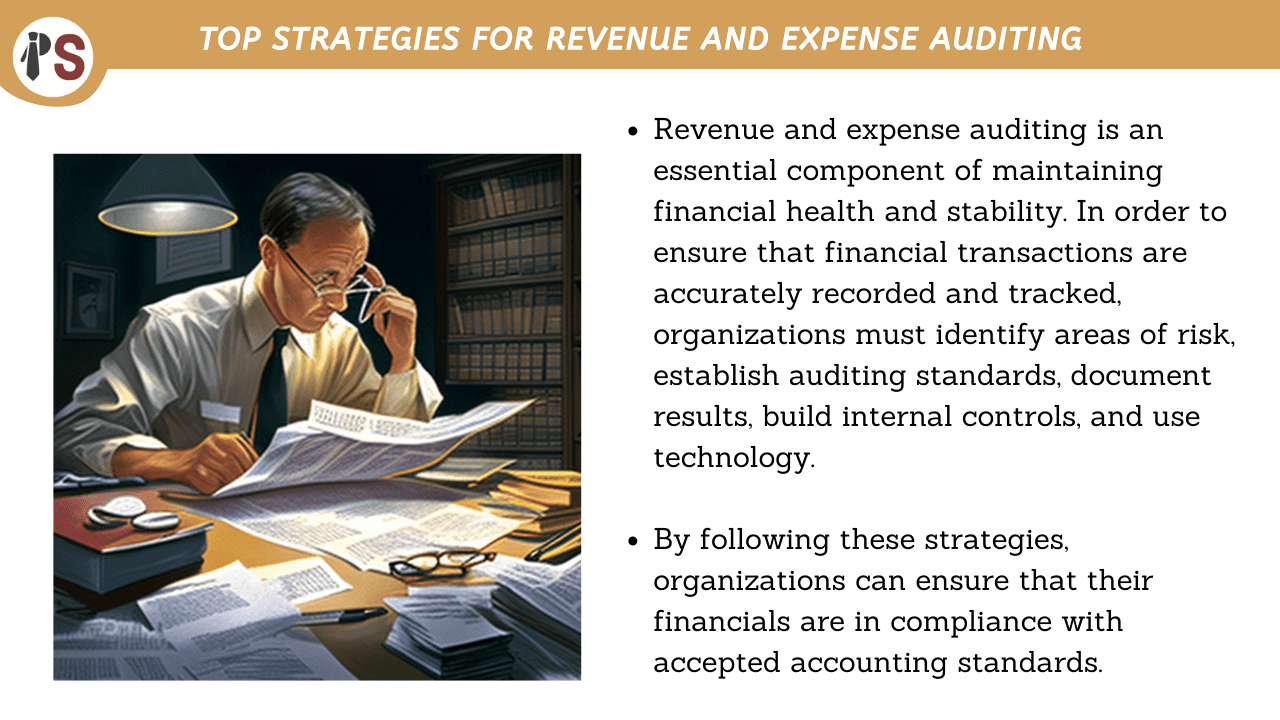
Revenue and expense auditing is a critical component of maintaining financial health and stability. In today’s competitive business environment, it is essential that companies ensure that all financial transactions are accurately recorded and tracked. By conducting regular audits, organizations can identify areas of potential fraud or inefficiency, and can ensure that their financials are in accordance with accepted accounting standards. This article will discuss the top strategies for effective revenue and expense auditing.
The first step in effective revenue and expense auditing is to identify areas of risk. This can be done by analyzing past financial trends and data to determine which areas are most likely to have discrepancies or errors. Companies should also consider any changes in their business operations that may have an impact on their financials, such as new customers, new products, new vendors, and changes in pricing. By understanding the areas of risk, organizations can create an audit plan that is tailored to address these areas.
Once areas of risk have been identified, organizations must establish auditing standards. Auditing standards should include specific procedures for verifying the accuracy and completeness of financial information, as well as criteria for identifying errors or discrepancies. Organizations should also establish a process for flagging any discrepancies that are identified during the audit process. This will ensure that all areas of risk are addressed and that any errors are quickly and efficiently corrected.
Organizations should ensure that all audit results are thoroughly documented. This includes any discrepancies or errors that were identified, as well as recommendations for resolving the issues. Documenting audit results will help organizations to track their progress and ensure that any identified issues are adequately addressed.
Organizations should also develop internal controls to ensure that financial information is accurately recorded and reported. This includes establishing procedures for data entry, validating financial information, and reconciling accounts. Internal controls should also include processes for monitoring compliance with established policies and procedures.
Technology can be a valuable tool for revenue and expense auditing. Automated auditing software can quickly identify discrepancies and errors, and can help organizations to identify areas of risk. In addition, technology can be used to automate the audit process, allowing organizations to save time and resources.
Revenue and expense auditing is essential for maintaining financial health and stability. By following the strategies outlined in this article, organizations can ensure that their financials are accurate and up-to-date. Through proper identification of areas of risk, establishment of auditing standards, thorough documentation of results, implementation of internal controls, and use of technology, organizations can ensure that their financials are in compliance with accepted accounting standards.
At Professional Saathi, we offer a range of business consultancy services that help businesses improve their performance, achieve growth, and overcome challenges.
Copyright 2025 © Created By KTPG PROFESSIONAL SAATHI CORPORATE CONSULTANT PRIVATE LIMITED, All Rights Reserved.
Leave Your Comment